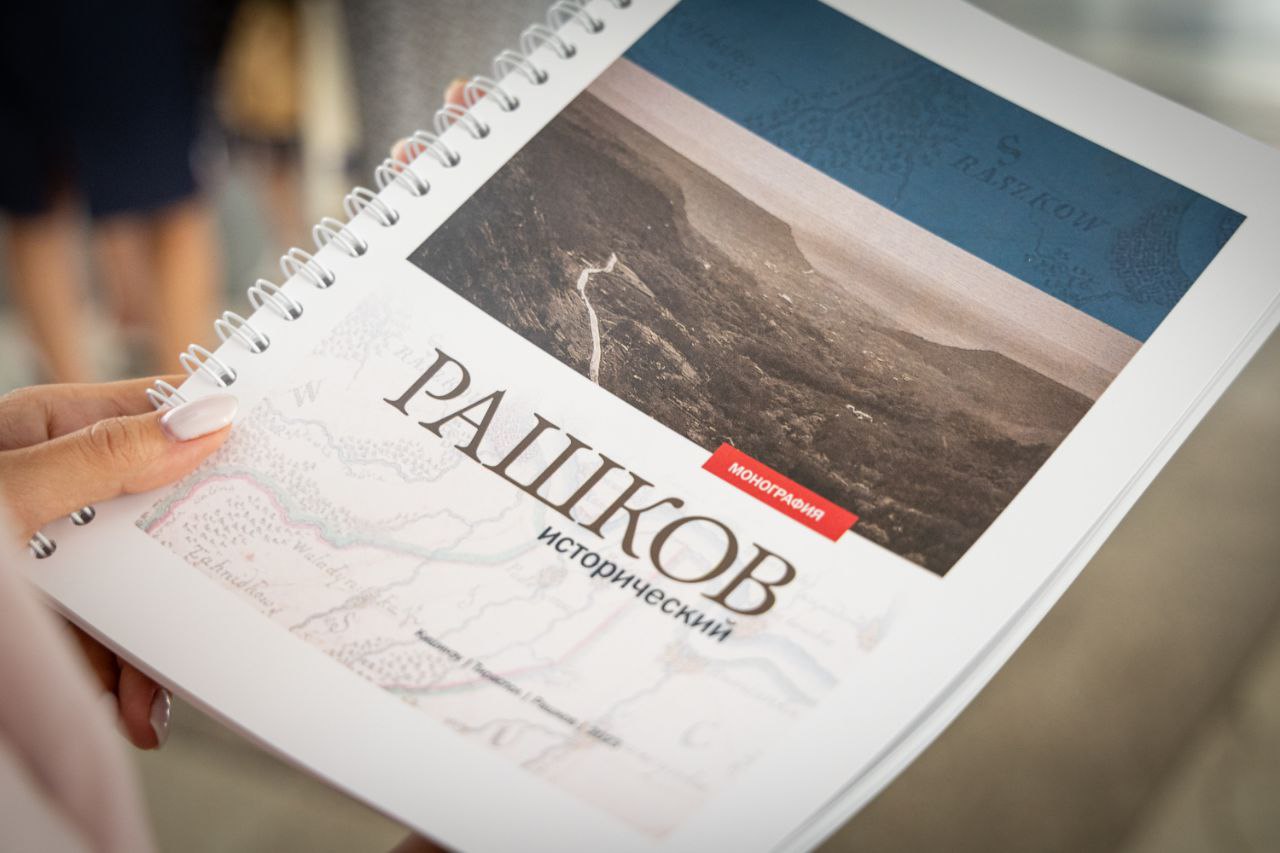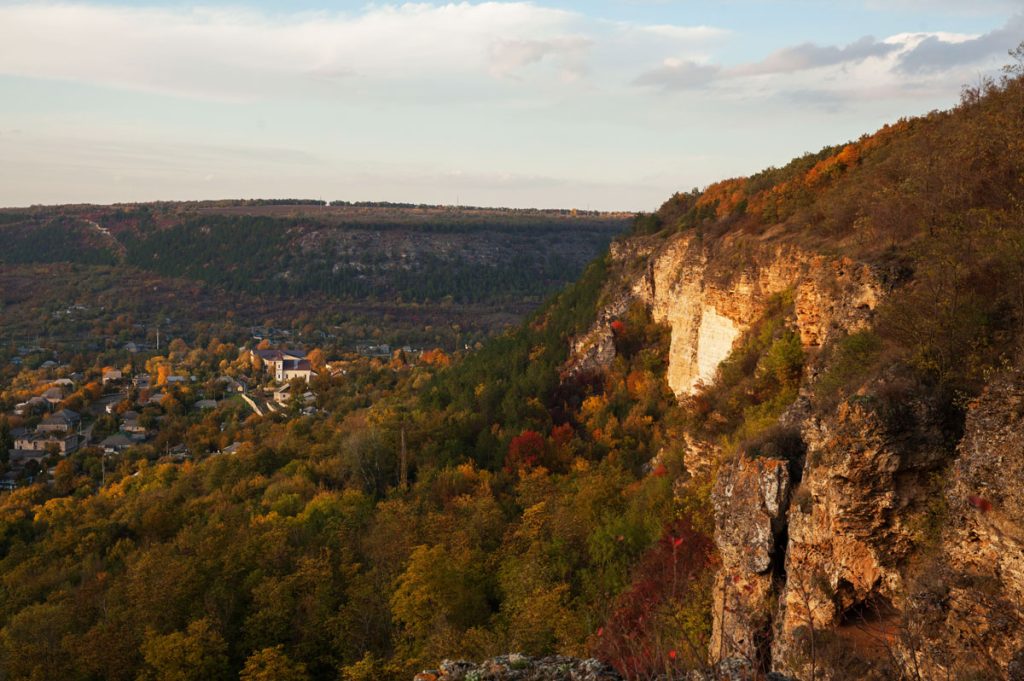A book has been published about the origins of Rashkov and its early history.
The scientific monograph contains information about the founding of the settlement and introduces previously unknown sources into scientific circulation.
When did Rashkov appear, what was on the picturesque hills of Pridnestrovie before him, who built the mysterious castle on the Red Rock and what role did Princess Ruksanda play in the history of Rashkov? The answers to these and other equally interesting questions are contained in the collective monograph “Historical Rashkov,” which includes publications by archaeologists, historians, numismatists and specialists in the history of architecture.
The collective monograph was the result of many years of research into documents from the 15th to 19th centuries, archaeological surveys and excavations. The book publishes materials that clarify controversial issues in the history of Rashkov. Previously unknown sources of information are being introduced into scientific circulation, which will allow us to see new facets of one of the most mysterious places in Pridnestrovie. This book is suitable not only for history fans, but also for local historians, travel enthusiasts, tour guides and anyone who wants to know more about Transnistria.
The fact that in the territory of the present village of Rashkova people lived back in the Stone Age is evidenced by multiple finds of stone tools.
“The natural conditions of the area in which the village is located contributed to the fact that this territory was inhabited by hunters of mammoths, woolly rhinoceroses and reindeer in the Upper Paleolithic era: from 22 to 18 thousand years ago. However, there are reliable traces of human habitation here at an earlier time,”
notes one of the authors of the monograph, candidate of historical sciences Nikolai Telnov.
The scientist counted about 20 archaeological sites from different times located in Rashkov and its surroundings. In addition to hunting camps, there was a large settlement of the mysterious Trypillian culture (received its name from the place of its first discovery near the village of Trypillian in Ukraine). These are farmers related to the peoples of Asia Minor. More than 5 thousand years ago, they built two-story clay houses, mastered highly developed pottery art, and made magnificent sculptures. Here in the 4th century BC. e. The settlement of the Thracians, an Indo-European people dominating the northern Balkans, flourished. Mysterious earthen fortifications have also been preserved in the vicinity of the village.
However, this does not mean that the history of Rashkov should be traced back to the Stone Age. We are talking about different settlements that existed in different periods of time on the same territory. Continuous development from era to era cannot be traced. But when the history of Rashkov itself as a settlement begins - Alexander Gornostal, head of the Podnestrovian Historical and Geographical Society, looked into this issue.
At the entrance to the picturesque village, on a stone stele you can see the number 1402, indicating the year of foundation. The date is based on the assumptions of 19th century researchers who connected Rashkov with the mysterious Karavul fortress, mentioned (but not founded!) in a document, the dating of which was attributed at the indicated time to 1402.
However, not only did it turn out that the document was incorrectly dated and dates back to the period no earlier than 1432, but, according to written sources, the localization of Kalaur still requires a separate investigation - the fortress is placed either in the area of the mouth of the Dniester, or on the Black Sea coast, or on the Dnieper River. The confusion stems from various localities with homophonous or barely similar names.
At the same time, A. Gornostal cited a previously unpublished document from the beginning of the 17th century, which mentioned, along with the village of Rashkov, the simultaneously existing village of Kalakur, the memory of which was preserved in the name of the modern tract Kalagur, located near the village of Stroentsy, 10 kilometers southeast of Rashkov.
Accordingly, for this reason and a number of other arguments given in the book, Karavul, a document from the early 15th century, cannot be associated with modern Rashkov and is a separate settlement, says Alexander Gornostal.
As for the time of the first mention of the toponym “Rashkov” on the Dniester, here, according to the researcher, not everything is so simple either. Alexander Gornostal proves that the family document of the Checheli noble family, in which, as previously believed, Rashkov was first mentioned, is a fake and a forgery from the 18th century in order to justify the right to property.
The author publishes for the first time in Russian another document: “Extract from the city books of the Vinnitsa povet of the Braslav voivodeship dated July 21, 1600 from the Nativity of Christ.” This source contains the story of the representative of the crown hetman, Jan Zamoyski, who, under a judicial oath, speaks of the founding of a settlement with a castle at the confluence of the Raskov River with the Dniester. Based on this document, the author claims that Rashkov as such was founded in April 1600. Moreover, Gornostal also gives the name of the first mayor of Rashkov - Martin (Marcin) Lopushinsky.
As for the castle discussed in the document, Gornostal localizes it on the cape of a towering plateau and located in the Krasnaya Gora tract above the village of Rashkov. The earthen walls and bastions of the castle-fortress, covered with forest, can still be seen today. They are also noted on the Russian topographic map of 1845, which at the end of the 19th century were mistakenly attributed as the remains of Vytautas’ castle of the 14th-15th centuries. Perhaps this is the same “fortress on the edge of the world” mentioned in Henryk Sienkiewicz’s novel “Pan Volodyevsky”.
The monograph also talks about the results of archaeological excavations of the Church of the Intercession, initiated in 2022 in order to clarify the date of the foundation of the temple and the possibility of attributing its foundation to periods earlier than the 18th century. The research yielded a large layer of information and interesting artifacts. It turned out that on the site of the Intercession Church there was a Christian necropolis of the 17th-18th centuries. Moreover, coins from various time periods were found in the hands of the buried. Scientists Andrei Krivenko and Sergei Razumov spoke about coin finds and the results of excavations.
Another interesting point: in the book there is a publication about the role of Princess Ruksanda in the history of Rashkov. The daughter-in-law of Hetman of Ukraine Bohdan Khmelnytsky received Rashkov as a outpost (a form of lease) in 1661 from its owner, one of the Polish elites, Jan “Sobepan” Zamoyski. Here she founded the St. Nicholas Monastery, which has not survived to this day, but has given rise to many legends and speculations.
For example, previously Ruksanda appeared only as a character in the legend about the spring in the center of the village “Panskaya Krinitsa”, according to which the spring appeared from the tears of Ruksanda mourning her deceased husband. Now the story of the princess, known for her amazing beauty, education and deep faith, takes on new details.

